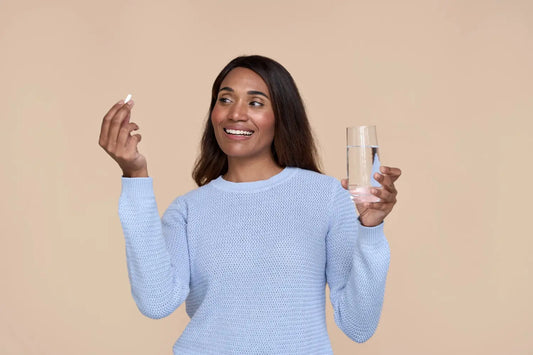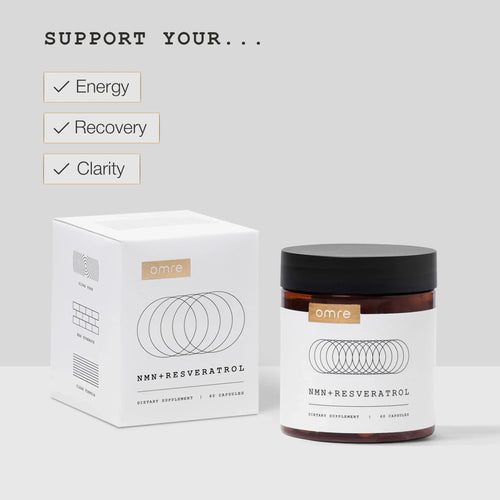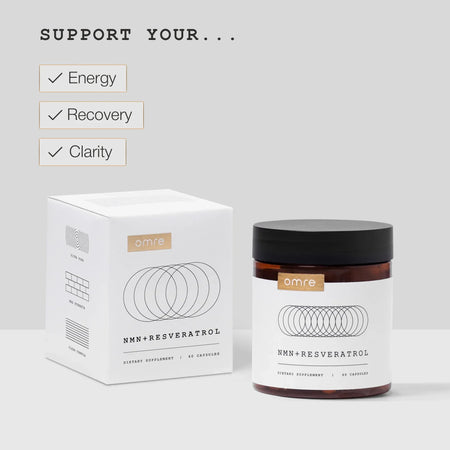Table of Contents
- What Does NAD+ Do in the Body?
- Types of NAD Supplements and Their Dosage Ranges
- NAD Therapy Dosage: IV, Injections, and Nasal Spray
- Recommended NAD+ Dosage Per Day by Goal
- Best Time to Take NAD Supplements
- How Often You Should Take NAD Supplements
- Should You Take NAD Supplements With or Without Food?
- What Factors Affect Your Ideal NAD Dosage?
- How to Test Your NAD Levels
- Safety and Side Effects
- Final Words
- FAQs
Finding the right NAD+ dosage per day can make all the difference in how you feel and perform by supporting energy metabolism and mitochondrial health.
Take too little and you may not feel changes in cellular repair or ATP production. Take too much and your body may not use it efficiently.
Below, you’ll learn how much NAD+ your body actually needs each day, based on research, real studies, and how different forms like NMN and NR work inside your cells.
Always talk to your healthcare provider before beginning any NAD+ supplementation protocol, especially if you manage medical conditions or take medications.
Key Summary:
-
NMN (Nicotinamide Mononucleotide): Most research supports 250–900 mg daily for boosting NAD+ and improving energy and recovery.
-
NR (Nicotinamide Riboside): Commonly taken at 250–500 mg per day, safely increasing NAD+ and supporting brain and metabolic health.
-
NAM (Nicotinamide): Safe up to 3,000 mg daily, though 500–900 mg is enough to raise NAD+ levels in most people.
-
NAD+ Injections: Typically 50–200 mg per dose, used weekly or biweekly under medical supervision.
-
NAD+ IV Therapy: Usually 500–1500 mg per session, administered in clinics for faster absorption and cellular rejuvenation.
NMN + RESVERATROL
Cellular NAD+ booster with ultra‑pure NMN and Resveratrol, at research‑backed doses.*
What Does NAD+ Do in the Body?
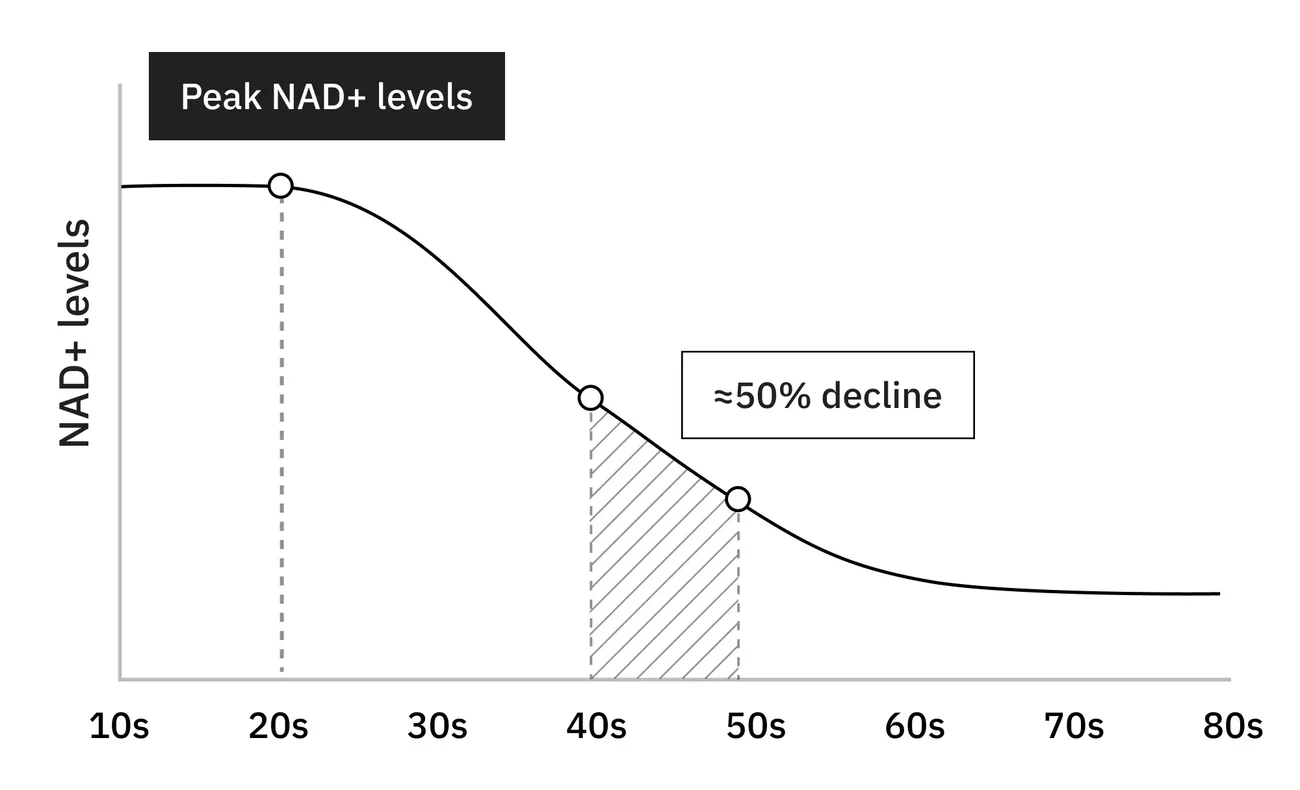 NAD+ is a coenzyme that helps your body turn food into energy, repair DNA, and protect cells from aging. It fuels essential processes in your mitochondria, the tiny “power plants” inside your cells, and keeps your metabolism and brain running smoothly.
NAD+ is a coenzyme that helps your body turn food into energy, repair DNA, and protect cells from aging. It fuels essential processes in your mitochondria, the tiny “power plants” inside your cells, and keeps your metabolism and brain running smoothly.
As we age, NAD+ levels drop by up to 50%, leading to fatigue, slower recovery, and cognitive decline.
According to a study, restoring NAD+ improved mitochondrial function and insulin sensitivity in mice, suggesting similar benefits in humans (1).
Another 2020 clinical study found that increasing NAD+ through supplementation supported DNA repair and reduced inflammation markers in older adults (2).
NAD+ also plays a role in activating sirtuins, enzymes linked to longevity (3).
Another study showed that maintaining higher NAD+ levels supports healthier aging by reducing oxidative stress and improving cell resilience (4).
Think of NAD+ as your body’s internal battery. When it’s full, you have more energy, focus, and vitality. When it’s low, your body starts running in low-power mode.
Types of NAD Supplements and Their Dosage Ranges
-v1759967558831.webp) Different forms of NAD supplements work in slightly different ways. Some act as precursors that your body converts into NAD+, while others deliver it directly. Here’s how they compare.
Different forms of NAD supplements work in slightly different ways. Some act as precursors that your body converts into NAD+, while others deliver it directly. Here’s how they compare.
NMN (Nicotinamide Mononucleotide)
NMN is one of the most popular NAD+ precursors. Human studies show that 150–1200 mg per day effectively increases NAD+ levels, with most benefits appearing around 250–900 mg daily.
In 2022, a randomized controlled trial confirmed that 250–900 mg/day of NMN improved NAD+ levels, energy metabolism, and muscle function in healthy adults (5).
NMN works quickly because it’s just one step away from NAD+ in the conversion chain. Many people start at 250 mg per day for one week, then increase gradually to find their “sweet spot.”
NR (Nicotinamide Riboside)
NR has been studied even more extensively. Most trials use 250–500 mg per day, though some go as high as 1000 mg.
A study found that NR supplementation raised NAD+ by about 60% in eight weeks and improved mitochondrial health (6).
NR is well-tolerated and may be slightly better absorbed in the digestive system compared to NMN. It’s ideal for those focused on brain health, endurance, and cellular energy.
NAM (Nicotinamide / Niacinamide)
NAM is a simple and affordable NAD precursor found in many multivitamins. It’s safe up to 3 grams per day, but studies show NAD+ increases even at 900 mg (7).
However, taking very high doses might block sirtuin activity, which can reduce some of NAD+’s anti-aging effects.
If you use NAM, moderate amounts (500–900 mg daily) are safest for long-term use.
NAD+ Direct Supplements (Oral & Sublingual)
While pure NAD+ has low oral bioavailability, newer sublingual tablets and liposomal forms have shown promising results. A 2024 study found 100 mg of sublingual NAD+ daily increased NAD+ by 76% in six weeks (8).
Sublingual absorption bypasses the gut, delivering NAD+ straight to the bloodstream. These products can be useful for those who don’t respond strongly to precursors like NMN or NR.
However, well-formulated tablet forms can also effectively support NAD+ levels, especially when taken consistently as part of a daily routine.
NAD+ Blends (NMN + NR)
Blends combine NMN and NR to support multiple NAD production pathways. This approach helps different tissues absorb NAD precursors more efficiently.
Some advanced formulations also include resveratrol or D-ribose, which further activate sirtuins and ATP production.
A blend containing 250 mg NMN + 250 mg NR daily can provide broad cellular coverage while keeping the dosage moderate and safe.
NAD Therapy Dosage: IV, Injections, and Nasal Spray
-v1759968332500.webp) For those seeking faster or more intensive results, NAD therapy can be delivered directly into the bloodstream, muscle, or even through the nose. These medical-grade methods are typically used in clinics and require professional supervision.
For those seeking faster or more intensive results, NAD therapy can be delivered directly into the bloodstream, muscle, or even through the nose. These medical-grade methods are typically used in clinics and require professional supervision.
Below are the most common approaches and their typical NAD injection dosage and NAD IV therapy dosage ranges based on research and case studies.
NAD IV Therapy
Typical NAD IV therapy dosage ranges from 500 to 1500 mg per session, depending on your health goals and tolerance. This method delivers NAD+ directly into your bloodstream for faster absorption and immediate cellular energy support.
IV sessions usually last 2-4 hours to reduce side effects like flushing or nausea. Many clinics start with daily infusions for 4–10 days, then continue once or twice a month for maintenance.
NAD Injections (Intramuscular)
Standard NAD injection dosage ranges from 25–100 mg per shot, typically given once or twice per week. This intramuscular method offers quicker absorption than oral forms and is more convenient than IV therapy.
Mild soreness at the injection site is the most common side effect. NAD shots are ideal for people who want consistent cellular support without visiting a clinic frequently.
NAD Nasal Spray
Typical NAD nasal spray dosage ranges between 75–120 mg per day, absorbed through the nasal membrane for rapid delivery to the bloodstream and brain.
Animal research also found 20 mg/kg intranasal NAD+ reduced brain injury markers, suggesting strong neuroprotective potential (9).
However, human research is still limited, so users should choose verified, physician-approved formulations.
NAD Topical Use
Topical NAD+ creams typically use 0.3-1% concentrations to improve skin repair, reduce inflammation, and support anti-aging.
While it won’t raise whole-body NAD+ levels, topical NAD+ can help improve skin texture, hydration, and recovery when used alongside oral or injectable forms.
Recommended NAD+ Dosage Per Day by Goal
Dosage depends on your health goals, current energy levels, and how you supplement (capsule, powder, or IV). Here’s a quick reference table to help you choose the right range:
Best Time to Take NAD Supplements
-v1759968490681.webp) The best time to take NAD supplements is in the morning, ideally with or after breakfast. Morning doses align with your body’s natural energy cycle, helping support mitochondrial activity and mental focus throughout the day.
The best time to take NAD supplements is in the morning, ideally with or after breakfast. Morning doses align with your body’s natural energy cycle, helping support mitochondrial activity and mental focus throughout the day.
Taking NAD+ boosters early in the day mimics your body’s natural NAD rhythm, which peaks during daylight hours when your cells are most active.
Since NAD+ helps convert food into energy, it pairs well with your first meal. Some users prefer taking NMN or NR about 30 minutes before breakfast for smoother absorption.
If you’re sensitive to energy-boosting effects, it’s best to avoid nighttime doses since NAD supplements can make you feel alert.
However, consistency matters more than timing, so find a routine you can easily stick to, whether that’s morning with coffee or mid-afternoon for an energy lift.
How Often You Should Take NAD Supplements
Most people take NAD supplements once daily to maintain stable NAD+ levels and steady sirtuin activation. Consistent daily use is more effective than taking large doses occasionally.
Studies show that NAD+ levels decline quickly when supplementation stops, so daily intake helps keep your body’s “cellular battery” charged.
For example, taking 250–500 mg of NMN or NR every morning maintains steady NAD levels over time. Some users prefer splitting the dose into two smaller portions, one in the morning and one mid-afternoon, for sustained energy and focus.
If you’re using NAD IV therapy or injections, frequency depends on your goals.
IV treatments may start daily for a few days, then shift to weekly or monthly maintenance sessions under medical supervision.
NMN + RESVERATROL
Cellular NAD+ booster with ultra‑pure NMN and Resveratrol, at research‑backed doses.*
Should You Take NAD Supplements With or Without Food?
You can take NAD supplements either with or without food, but most people find they absorb better and feel gentler on the stomach when taken with a meal. Taking NAD+ precursors like NMN or NR alongside breakfast helps support smoother digestion and steady energy release throughout the day.
While NAD supplements don’t strictly require food for absorption, pairing them with a balanced meal that includes healthy fats can enhance bioavailability and reduce mild side effects like nausea or stomach upset.
Some users prefer taking NMN or NR 30 minutes before breakfast for faster absorption, especially in sublingual form.
Ultimately, consistency matters more than timing. Choose the method that feels most comfortable and fits your daily routine.
What Factors Affect Your Ideal NAD Dosage?
Your ideal NAD dosage depends on your age, lifestyle, current health, and how efficiently your body converts NAD precursors like NMN or NR.
Everyone’s NAD metabolism is different, so the right dose varies from person to person. Here are a few factors that can change how much NAD your body needs:
Age: NAD+ levels decline up to 50% by age 60, so older adults may need higher doses.
Lifestyle: Stress, poor sleep, alcohol, and high-intensity workouts can deplete NAD faster.
Health conditions: Metabolic issues or chronic fatigue can increase cellular NAD demands.
Diet: Low niacin or B-vitamin intake reduces NAD synthesis.
Genetics: Some people naturally convert NMN and NR more efficiently than others.
Goals: Longevity, energy, or recovery support may each call for different dosage levels.
Tracking how you feel, your energy levels, and even measurable NAD blood levels over time helps you fine-tune your ideal range.
How to Test Your NAD Levels
-v1759969845179.webp) You can test your NAD levels through an intracellular NAD+ test, which measures how much NAD is present inside your cells. This is more accurate than blood tests since NAD works within cells, not just in circulation.
You can test your NAD levels through an intracellular NAD+ test, which measures how much NAD is present inside your cells. This is more accurate than blood tests since NAD works within cells, not just in circulation.
Testing helps you identify whether your NAD+ levels are optimal, deficient, or suboptimal.
For example, Dr. Jin-Xiong She’s research defines optimal NAD+ levels as 40–100 µM, with anything below 30 µM considered low.
Baseline testing before starting supplementation lets you see where you stand. After 4–6 weeks of consistent use, retesting helps you find your personal “sweet spot.”
If your levels are below range, you might increase your NMN or NR dosage slightly. If they’re already optimal, maintaining your current routine is enough.
Testing can be done using at-home kits from NAD research labs or wellness clinics. The process typically involves a simple finger-prick blood sample, and results are usually ready within a week.
This data-driven approach removes guesswork and helps you match your clinical dosage range to real DNA repair support and ATP production outcomes.
Safety and Side Effects
Most people tolerate NAD+ supplements well, but the experience can vary depending on the form and dosage. Below are the most common effects and precautions associated with oral, IV, and injection-based NAD therapy.
Oral NAD+ Supplements (NMN, NR, NAM)
Oral NAD precursors like NMN, NR, and NAM are considered very safe. Studies show minimal side effects even at high doses, such as up to 1200 mg/day of NMN or 1000 mg/day of NR.
Some users may notice mild nausea, bloating, or flushing during the first few days of supplementation.
Starting with a lower dose, around 250 mg/day, and increasing gradually helps the body adjust.
Long-term human studies have reported no major safety issues, and the FDA recognizes nicotinamide riboside as generally safe (GRAS).
However, people with liver or kidney disease should speak with a doctor before use since NAD metabolism relies on these organs.
NAD IV Therapy Side Effects
IV NAD+ therapy delivers high doses directly into your bloodstream, which can cause temporary reactions if infused too quickly. Some people experience flushing, lightheadedness, headache, or nausea during the session.
These effects are usually mild and subside once the infusion rate slows down. Clinics typically recommend infusing NAD over 2–4 hours for comfort and safety.
While IV therapy can rapidly raise NAD levels, it should only be done under professional supervision. Anyone with heart or blood pressure issues should consult a healthcare provider before undergoing treatment.
NAD Injections (Intramuscular)
NAD+ intramuscular injection dosage usually ranges between 25 mg and 100 mg per shot. It’s generally well tolerated, but mild muscle soreness or redness at the injection site is common.
Rarely, people may experience fatigue or dizziness if injected too rapidly. Always make sure injections are administered by a qualified professional to avoid contamination or incorrect dosing.
Intramuscular NAD injections are not meant to replace oral or IV supplementation but can serve as a convenient middle ground for those who want higher bioavailability without spending hours at a clinic.
NAD Nasal or Topical Products
Nasal sprays and topical NAD+ creams are still relatively new. While they appear safe at moderate doses, research is limited.
Some users may notice slight nasal irritation or skin sensitivity, depending on the formulation. As with any supplement, look for third-party tested products to avoid contamination or inaccurate labeling.
Final Words
Finding the right NAD+ dosage per day is about balance, not extremes.
Most people see benefits from steady, moderate doses of NMN or NR, typically between 250 and 500 mg per day, taken consistently over time.
NAD+ therapies like IV or injections can offer faster results but require professional care.
What matters most is maintaining healthy NAD+ levels to support your body’s natural energy, focus, and longevity.
Consistency, smart dosing, and periodic testing can help you stay in your optimal range.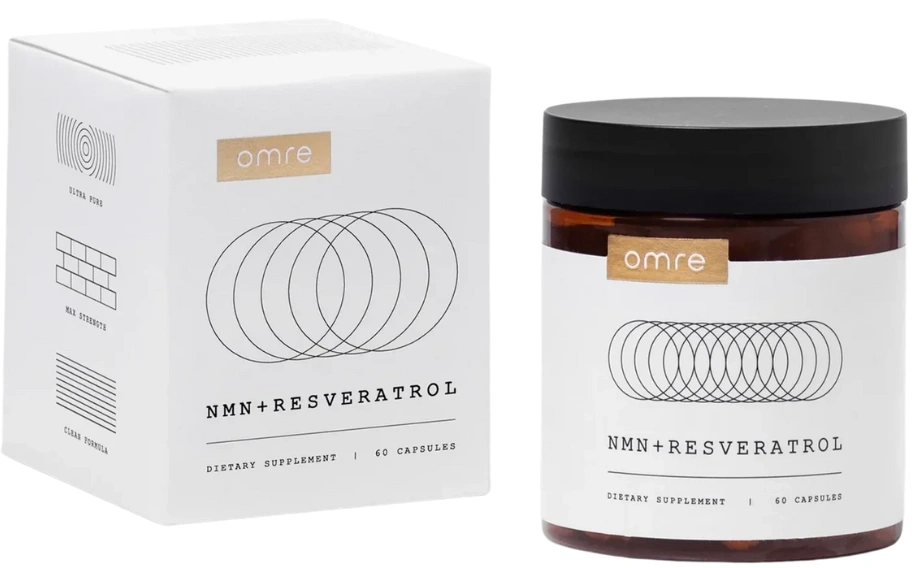 If you’re looking for a reliable daily NAD+ routine, Omre’s NMN + Resveratrol formula offers a science-backed way to support your energy and cellular health naturally.
If you’re looking for a reliable daily NAD+ routine, Omre’s NMN + Resveratrol formula offers a science-backed way to support your energy and cellular health naturally.
It’s a simple, steady approach to keeping your body’s “cellular battery” fully charged.
FAQs
How much NAD should I take daily?
Most studies support 250–900 mg of NMN or 250–500 mg of NR per day for energy and healthy aging. Always start with the lower range and increase gradually as needed.
How much NAD+ should I inject?
Typical NAD+ injection dosages range from 25 mg to 100 mg per shot, given once or twice weekly. In clinical settings, some protocols go up to 200 mg for advanced recovery or detox support.
What is the recommended NAD+ intramuscular injection dosage?
For intramuscular use, NAD+ injections are usually 25–50 mg to start, with some protocols increasing to 100 mg per dose depending on individual response. These should only be administered under professional supervision.
What time of day should I take NAD?
Morning is best since NAD supports daytime energy production. Taking it with or after breakfast helps your body use it efficiently.
Can you take NAD every day?
NAD supplements work best when taken consistently each day to maintain stable cellular levels. Skipping doses can cause NAD+ to drop quickly.
Can I combine NAD with other supplements?
NAD+ works well with resveratrol, TMG, and CoQ10, which support sirtuins and energy metabolism. Always check with your doctor if you’re taking medications or multiple active supplements.



